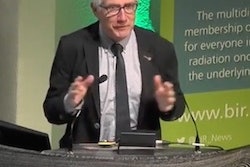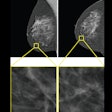The ESR, RSNA, and three other societies have issued a joint statement on the development and use of AI in radiology.
The statement is a collaborative effort between the ESR, RSNA, American College of Radiology (ACR), Canadian Association of Radiologists (CAR), and the Royal Australian and New Zealand College of Radiologists (RANZCR). It was written by a team led by Prof. Adrian Brady, chair of the ESR Board of Directors, and published on 22 January in the RSNA journal, Radiology: Artificial Intelligence.
The paper "defines the potential practical problems and ethical issues surrounding the incorporation of AI into radiology practice," and delineates "the main points of concern that developers, regulators, and purchasers of AI tools should consider prior to their introduction into clinical practice" and offers "methods to monitor the tools for stability and safety in clinical use, and to assess their suitability for possible autonomous function."
"This statement will serve as both a guide for practicing radiologists on how to safely and effectively implement and use the AI that's available today, and a roadmap for developers and regulators on how to approach delivering improved AI for tomorrow," noted co-author Dr. John Mongan, PhD, of the University of California, San Francisco and chair of the RSNA Artificial Intelligence Committee.



















